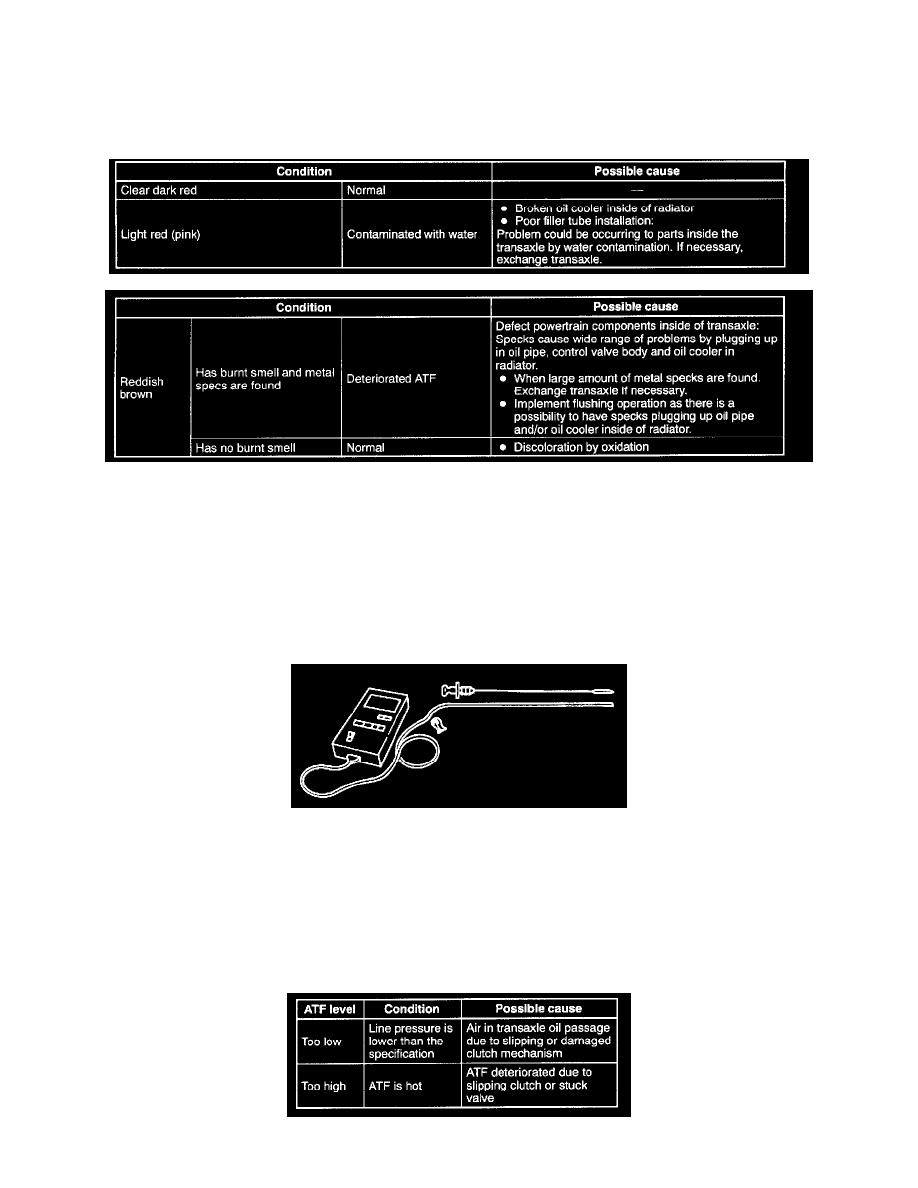MPV DX V6-2.5L DOHC (2000)

Fluid - A/T: Testing and Inspection
AUTOMATIC TRANSAXLE FLUID (ATF) INSPECTION
Automatic Transaxle Fluid (ATF) Condition Inspection
1. One way of determining whether the transaxle should be replaced is by noting:
-
If the ATF is muddy or varnished.
-
If the ATF smells strange or unusual.
ATF Condition
Automatic Transaxle Fluid (ATF) Level Inspection
Caution: The ATF amount varies according to ATF's temperature. Therefore, when checking the ATF level or replacing the ATF, use a thermometer
to measure the temperature then adjust the ATF amount to the specified level according to the specified temperature.
1. Park the vehicle on level ground.
2. Apply the parking brake and position wheel chocks securely to prevent the vehicle from rolling.
3. Adjust the depth of the thermistor probe to the measure same depth as the dipstick and hold the probe with a paper holder.
4. Insert into the filler tube to the predetermined depth and measure the temperature.
5. Warm up the engine until the ATF reaches (60 - 70° C (140 - 158° F)).
Caution: Do not warm the transaxle by performing stalls. This will damage the torque converter.
Note In some cases it may be necessary to inspect the ATF in the cool range 15 - 25° C (59 - 77° F) before warming up the engine.
6. While depressing the brake pedal, shift the selector lever to each range (P-1), pausing momentarily in each range.
7. Shift back to P position.
Note If the ATF level is too high or too low in hot condition, the following problems may be the cause.
